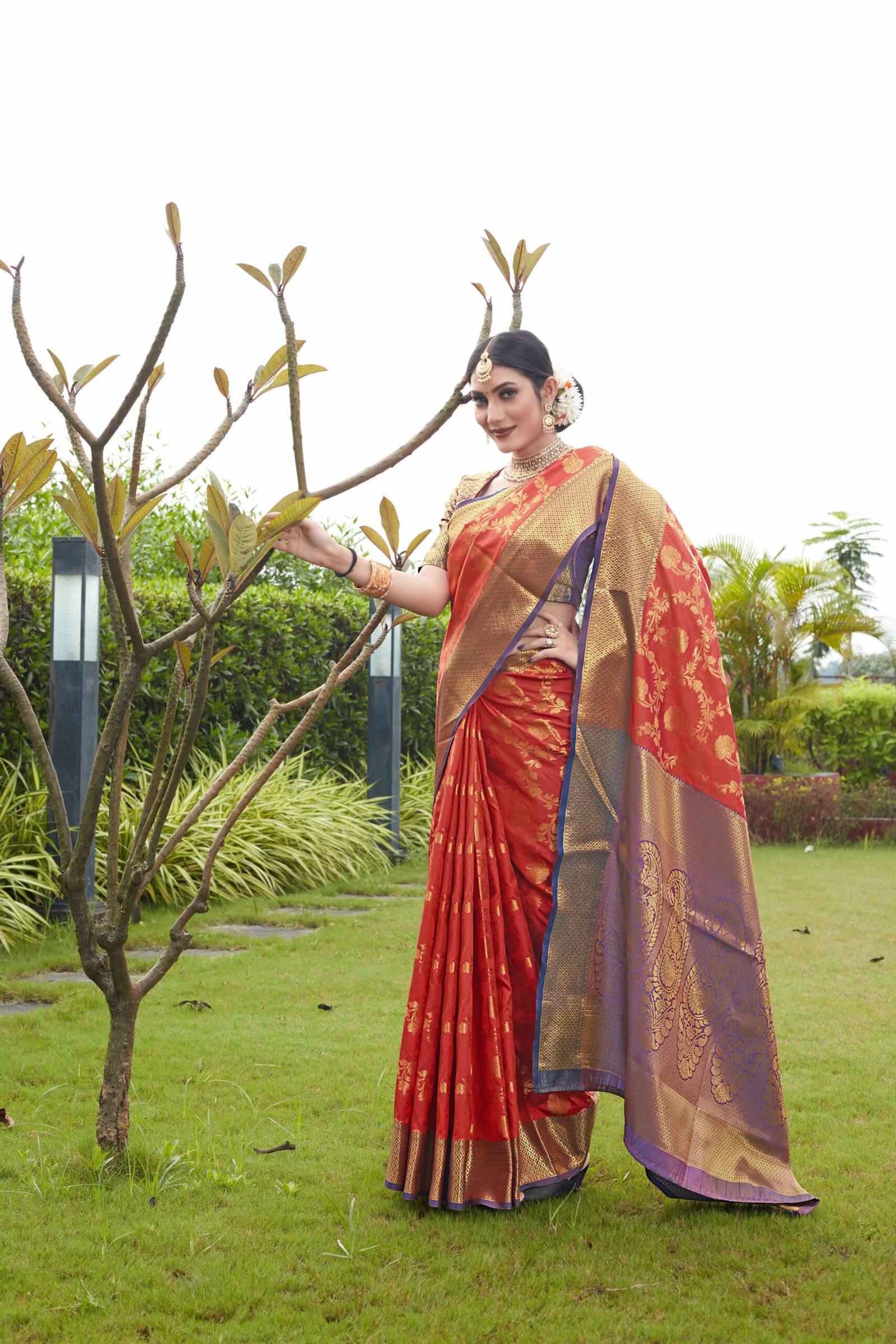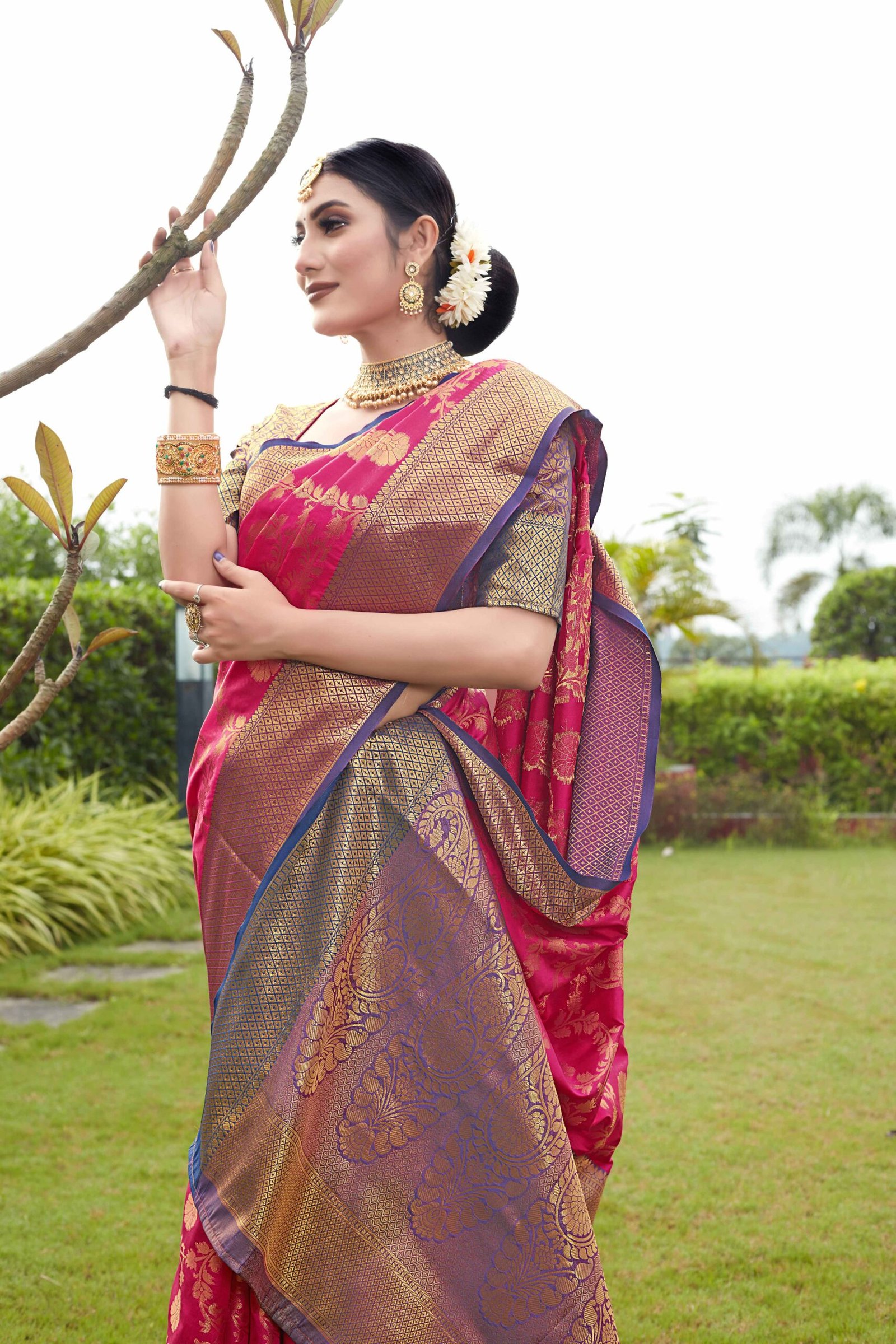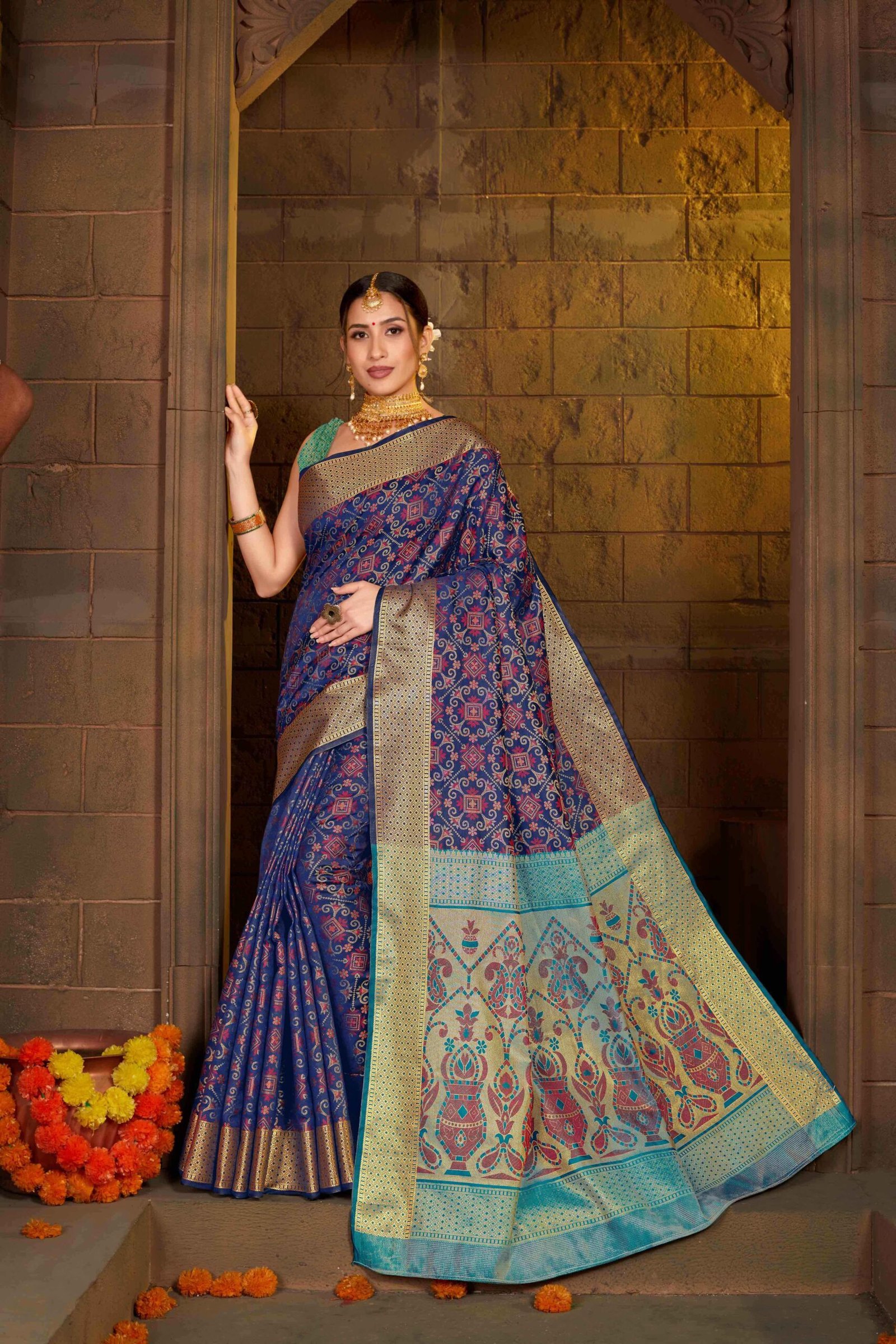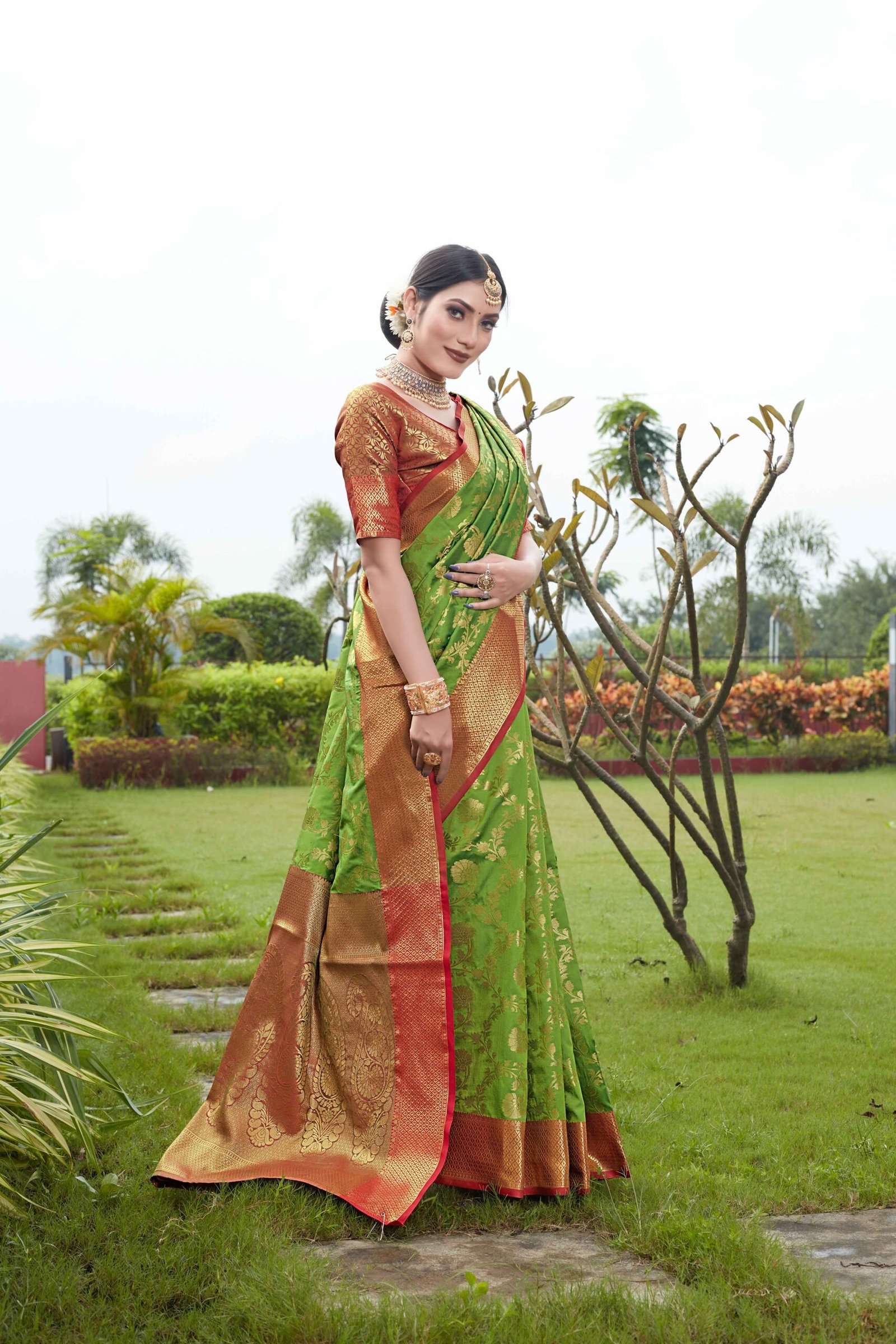In the kaleidoscope of Indian weddings, the saree emerges as the epitome of grace and tradition. Beyond being a piece of clothing, the Indian wedding saree for women embodies centuries of cultural richness, intricate craftsmanship, and a celebration of love. This article delves into the enchanting world of Indian wedding sarees, exploring their historical significance, diverse styles, and the artistry that transforms them into cherished heirlooms.
Historical Roots:
The roots of the Indian wedding saree can be traced back to ancient times, where it played a pivotal role in the rites of passage for women. The sarees, with its origins deeply embedded in Indian culture, has been a constant companion in the journey from girlhood to womanhood. From the royal courts of ancient dynasties to the rural landscapes of India, the wedding saree has been witness to countless love stories and cultural milestones.
Diverse Regional Styles:


India’s cultural diversity is reflected in the myriad styles of wedding sarees, each encapsulating the essence of its region. The opulent Banarasi silk sarees from Uttar Pradesh, the vibrant Kanjeevaram silk sarees from Tamil Nadu, the intricately woven Benarasi saree for women from Gujarat, and the regal Paithani sarees from Maharashtra – each region boasts its unique weaving techniques, motifs, and color palettes. The choice of a wedding saree often reflects not only the bride’s personal style but also her cultural roots.
Symbolism and Traditions:
The Indian wedding saree is laden with symbolism, often chosen with care to align with cultural traditions and rituals. Red, considered an auspicious color, is a popular choice for brides in many Indian communities, symbolizing love, fertility, and prosperity. The saree itself is a symbol of the bride’s transition to a new phase of life, and the choice of fabric, embroidery, and embellishments is deeply tied to cultural beliefs and regional customs.
Weaving Techniques and Embellishments:
The creation of an Indian wedding saree is a laborious process that involves skilled artisans and master weavers. Handloom weaving remains integral to many saree traditions, with craftsmen meticulously bringing to life intricate patterns and designs. Zardozi saree, Kundan, and Dabka work are some of the embellishments that add opulence to wedding sarees, turning them into veritable works of art. Each thread, each bead, and each sequin is a testament to the dedication and craftsmanship of those who contribute to the creation of these exquisite pieces.
Contemporary Trends:

While rooted in tradition, Indian wedding sarees have adapted to contemporary fashion trends. Modern brides often seek a fusion of tradition and trend, exploring innovative drapes, unconventional color combinations, and experimenting with blouse designs. Designers are pushing boundaries, introducing contemporary elements to classic saree styles, ensuring that the wedding saree remains not just a cultural artifact but a fashion statement that evolves with the times.
Regional Wedding Saree Styles:
Banarasi Silk Sarees:
Characterized by intricate brocade work and heavy gold or silver zari, Banarasi silk sarees are a symbol of royalty and grandeur.
Often adorned with motifs like flowers, leaves, and geometric patterns, these sarees are a popular choice for North Indian brides.
Kanjeevaram Silk Sarees:
Hailing from Tamil Nadu, Kanjeevaram silk sarees are known for their rich silk texture and contrasting borders.
Traditional temple motifs, checks, and stripes make these sarees timeless classics, with vibrant colors like red, green, and gold dominating.
Gujarati Bandhani Sarees:
Originating from Gujarat, Bandhani sarees are characterized by tie-dye techniques that create intricate patterns.
Bright colors, mirror work, and elaborate pallus make these sarees a staple in Gujarati weddings.
Paithani Silk Sarees:
Maharashtrian brides often choose Paithani silk sarees, known for their peacock and flower motifs.
The vibrant colors, coupled with the zari borders, make Paithani sarees a perfect choice for Marathi weddings.
Conclusion:
In the symphony of Indian weddings, the wedding saree plays a melodious tune, harmonizing tradition, culture, and fashion. Beyond its role as bridal attire, the Indian wedding saree is a storyteller, weaving tales of love, heritage, and artistry. As brides don these timeless ensembles, they not only step into a new chapter of their lives but also carry forward a legacy that transcends generations. The Indian wedding saree remains a canvas where tradition meets modernity, and where the threads of the past are intricately woven into the fabric of the future.

